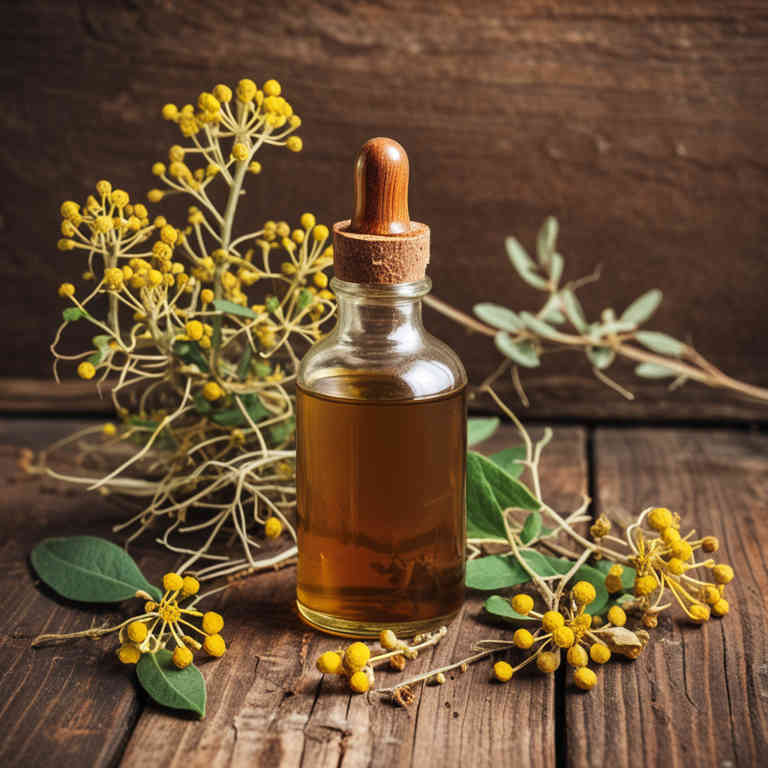Hypericum perforatum tincture for medicinal use

Hypericum perforatum tincture is a liquid preparation made by soaking the dried flowers of the St. John's wort plant in alcohol.
It is commonly used in herbalism for its potential mood-enhancing properties and to support mental well-being. This tincture is often taken internally to help alleviate symptoms of mild to moderate depression and anxiety. It is also used externally for its anti-inflammatory and wound-healing properties.
However, it should be used with caution due to possible interactions with other medications.
Uses
Hypericum perforatum tincture has been used to treat depression, anxiety, and mild to moderate mood disorders for centuries.
Historically, it was valued in ancient Greek and Roman medicine for its purported ability to uplift the spirit and ease emotional distress. Traditional herbalists in Europe used it to support mental well-being and as a remedy for wounds and skin conditions. In modern times, it is widely recognized for its active compound, hypericin, which may influence neurotransmitter activity in the brain.
Today, it is often used as a complementary therapy for depression and is available in various forms, including tinctures, capsules, and teas.
Benefits
Hypericum perforatum tincture has health benefits such as improving mood, reducing symptoms of depression, and supporting nervous system health.
It contains compounds like hypericin and flavonoids that may help regulate neurotransmitters like serotonin and dopamine. This preparation is often used to alleviate mild to moderate depression and seasonal affective disorder. It may also have anti-inflammatory and antioxidant properties that contribute to overall well-being.
However, it should be used under the guidance of a healthcare professional to ensure safety and appropriate dosage.
Constituents
Hypericum perforatum tincture active constituents include hyperforin, hypericin, flavonoids, tannins, and essential oils.
These compounds are known for their potential antidepressant, anti-inflammatory, and antiviral properties. Hyperforin is believed to influence neurotransmitter levels in the brain, while hypericin may have phototoxic effects. The tannins and flavonoids contribute to the preparation's antioxidant and antimicrobial activities.
This tincture is often used to support mood regulation and skin health.
Preparation
To make Hypericum perforatum tincture, first gather fresh or dried Hypericum perforatum (St. John's Wort) and ensure it is free from contaminants.
Next, prepare a high-quality alcohol base, such as 40-50% ethanol or a mixture of vodka and water, in a ratio of 1 part herb to 5 parts alcohol. Place the herbs in a clean glass jar and pour the alcohol over them, making sure the herbs are fully submerged. Seal the jar and store it in a dark, cool place, shaking it gently every few days for 4 to 6 weeks.
After the steeping period, strain the liquid through a fine mesh strainer or cheesecloth to separate the tincture from the plant material, and store it in a dark glass bottle away from light.
Side Effects
Hypericum perforatum tincture may lead to interactions with certain medications, particularly those affecting the central nervous system.
It is commonly used for its antidepressant properties and to support mood regulation. However, it can cause side effects such as gastrointestinal discomfort, dizziness, and photosensitivity. In some cases, it may increase the risk of seizures, especially in individuals with a history of epilepsy.
Long-term use or high doses may also lead to liver toxicity, necessitating careful monitoring by a healthcare professional.